Dr Heather Greenfield was a powerhouse in the field of nutrition,both nationally and internationally. She was also a passionate advocate for women’s rights,fighting for them in the prevailing culture of the University of NSW (UNSW) where she worked first as a lecturer and rose to the position of associate professor in nutrition between 1976 and 1998. After retirement,she was an adjunct professor in UNSW and the University of Sydney and of Canberra until 2018.
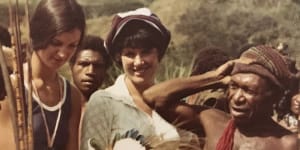
Dr Heather Greenfield with a group of New Guineans.Supplied
Heather was born in Sunderland,UK. Her mother and her girls’ school were “ferociously feminist about higher education”,and she accepted a place in London University’s Bedford College,for a science degree,which she loved.
By then,however,she had already had two of what proved to be a series of health afflictions throughout her life,having become half-deaf as a result of measles in her childhood,followed by hospitalisation with bronchiectasis from the age of 13,for 18 months,and which then became a chronic lifelong condition. These,and other afflictions in later life,she bore stoically and with characteristic good humour.
While at Bedford College she was encouraged to focus on research. At the same time,she was strongly influenced byThe Second Sexby French philosopher Simone de Beauvoir,setting her values in concrete.
Heather graduated with a bachelor of science (honours),zoology and physiology in 1960,and later undertook her PhD at the Queen Elizabeth College,University of London,completing it in 1970. She then spent two years in Italy,in consulting work for the Food and Agricultural Organisation (FAO),followed by a nutritionist’s research position at the Institute of Medical Research in Goroka,in Papua New Guinea (PNG).
Her work there was the real start to her lifelong focus on a research and nutrition career. At the same time,two days after arriving in PNG,she was delighted to learn that she was pregnant. There proved to be a lot of negativity by the institute’s management towards Heather being a single mother. She also found her first work with a large human population (examining the energy requirements for pregnancy and lactation in women agricultural labourers) to be challenging. Fortunately,she received great practical support from her Irish assistant,Jane Barnes,who then became a fellow nutritionist and a lifelong friend.
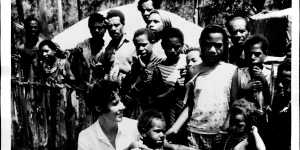
A pikinini man (child) sits worriedly in the lap of Dr Heather Greenfield in Papua-New Guinea,1973.Supplied
In 1976 Heather was appointed as a lecturer in UNSW’s Faculty of Applied Science’s Department of Food Science and Technology. As a single mother and as the only woman in the faculty at that time,she experienced considerable discrimination which she battled,successfully,over time,especially after a series of successful grant applications,but the early days were especially challenging as,one week into the job,she learnt,again happily,that she was pregnant.
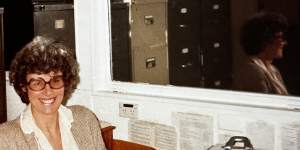
Dr Heather Greenfield in her NSW office.Supplied
During the 1970 and ’80s there was a strong push to remove the foreign food composition data,primarily British,from the tables,and to use only Australian analytical data. The production of this data was initiated by Heather,and she then worked on this with a UNSW colleague,Professor Ron Wills.
During a 1987 sabbatical,Heather took a 12-month position with the South Pacific Commission to manage a regional program for the production,management and use of Pacific food composition data. Significant outcomes from this included her contributions to the Second Pacific Food Composition Tables and the development of a food composition training course at the University of the South Pacific,in Suva.
In a later sabbatical,Heather – and her by now well-travelled children – went to France,where she worked with the International Agency for Research on Cancer. And,at the same time,she collaborated with a British scientist,Professor David Southgate,on the first textbook written on food composition –Food Composition Data:Production,Management and Use– which became known as “the bible for food composition”. This is still in use by database compilers,more than 30 years after its first release in 1992 as a key textbook in universities worldwide.
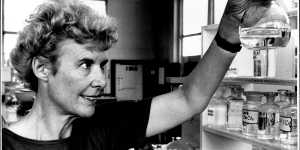
Heather Greenfield,senior lecturer in food science and technology at University of NSW,1989.Fairfax
In 1993 Heather organised the first international conference dedicated to food composition,which is still held every two years. She received a medal for her contribution to food composition at the Second International Food Data Base Conference,and the Nevin Scrimshaw Prize as “a recognised leader in food composition data and its importance worldwide” presented by FAO-Infoods (International Network of Food Data Systems) in 2011.
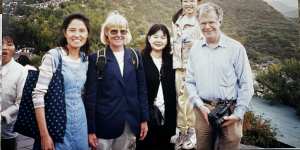
Heather on the Great Wall of China.Supplied
She continued to advocate for the use of original analytical data for Australian foods in national databases,and for the release of data in forms that are actually useful for users,and continued her involvement in the Pacific region via the Oceaniafoods network.
In the late 1990s she worked on her “favourite nutrient”,vitamin D,and the bioavailability of calcium and vitamin D-fortified milks as a supplementation on bone mineral density of Chinese girls,in collaboration with Professor David Fraser,University of Sydney.
She had over 150 scientific publications,including 12 monographs,to her credit in her career,and she instilled in all her UNSW students the importance of food composition data,because without fundamental,original data,how could we assess the quality and adequacy of the Australian food supply?
Additionally,for her female students,Heather showed that it was possible for women to survive and thrive in what was then a male-dominated field of food science and technology. She also served on several government committees outside the university,in Australia and in PNG.
In recent years,with yet another challenging illness,Heather continued to enjoy the company of friends,fine foods and concerts,safe in the care of her daughter Leah,and in regular contact with Europe-based son Zac.
She was also a board member for the Rape Crisis Centre (now Full Stop Australia) from 2009 to 2011.
While work and community took much of her time,family was always her top priority,and she was always immensely proud of everything achieved by her children and four grandchildren.
As one friend put it,“Heather never changed. She grabbed life and was utterly fearless. We have always been proud of her and all that she has achieved”.
Start the day with a summary of the day’s most important and interesting stories,analysis and insights..